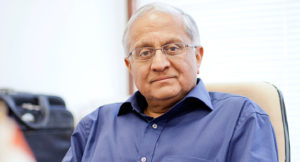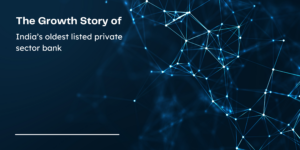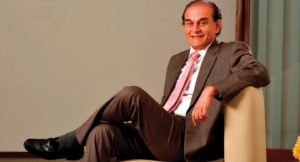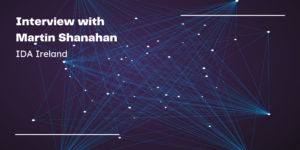Cognizant Technology Solutions (Cognizant), a global IT services company has touched revenues of US $7.35 billion last fiscal, thanks to a compounded annual growth rate (CAGR) of more than 30 per cent over the last six years. Vortex Engineering (Vortex), a solar ATM manufacturer is slated to touch revenues of US $7 million this fiscal, up from US $2 million last year. We thought it would be a good idea to get the senior management team at Vortex to indulge in a dialogue with Cognizant’s Vice Chairman, Lakshmi Narayanan, to get a tip or two to manage their company in the scaling up phase

Cognizant Technology Solutions (Cognizant), a global IT services company has touched revenues of US $7.35 billion last fiscal, thanks to a compounded annual growth rate (CAGR) of more than 30 per cent over the last six years. Vortex Engineering (Vortex), a solar ATM manufacturer is slated to touch revenues of US $7 million this fiscal, up from US $2 million last year. We thought it would be a good idea to get the senior management team at Vortex to indulge in a dialogue with Cognizant’s Vice Chairman, Lakshmi Narayanan, to get a tip or two to manage their company in the scaling up phase
In 2010, L. Kannan, founder and CTO and Vijay Babu, CEO of Vortex, made it to the World Economic Forum’s Tech Pioneers 2010 list. Time Magazine recognized Vortex as “a startup that will change your life” for its solar-powered, low-cost ATM specifically built for emerging countries and rural India.
The early recognition was well warranted. In March 2013, the company touched annual revenues of US $2 million thanks to the 800-odd ATMs it has deployed in tier-II cities and rural India (in addition to a few in other countries). The key to Vortex’s success is its low-cost product, the ability to handle soiled currency, local-language receipt printing and most importantly, the fact that the ATM can be solar-powered allows it to be installed in areas with electricity deficit. Over the next two years, the company is gearing up to deploy 9000 ATMs, primarily because of the orders it has from public sector banks. The company is also targeting revenues of US $7 million next year.
The Chennai-based duo of Kannan and Vijay was getting ready for the growth phase. Competition – in the form of global players like NCR, Diebold and Wincor – was coming in, thanks to the explosion of the Indian ATM industry, which is slated to touch 2,50,000 ATMs by 2015, up from 1,00,000 ATMs deployed in 2012. Vortex, with some early inroads in the export market, was also looking to expand into several SAARC and African countries. Vijay was asking himself several questions – How do I get my organisation ready internally? With a market that is exploding, how do I deal with competition? What should my export-market strategy be?
At this juncture, we thought it would be a good idea to get Vijay and Kannan in touch with Lakshmi Narayanan, Vice Chairman, Cognizant, for a freewheeling conversation. At the outset, it seems like the two businesses are very different from each other – Vortex, a product company that is innovation driven and Cognizant, a services company that is customer- experience driven. However, at The Smart CEO, we were convinced that a chat with Narayanan would nudge Kannan and Vijay to think through their own business in greater detail. As a founding member of Cognizant, Narayanan is credited with growing the company at break neck pace, and catalyzing the company’s high-touch customer relationship and delivery excellence model. We got them to huddle up at one of Cognizant’s facilities in Chennai with the specific goal of discussing Vortex’s scaling up phase. The result: some wonderful insights for anyone gearing up to expand their business and very interestingly for us, proof that such creative conversations can be tremendously useful.
(Excerpts below)
MANAGEMENT OF CONVERGENCE IN INNOVATION
Lakshmi Narayanan (LN): Why don’t you take me through your product’s features and operational details of your company?
Vijay Babu/L. Kannan (VB/LK): Let us start with the details about the product. The technology behind the product includes an electro-mechanical design, electronics, product software and algorithms. On the technology side, we have a mechanical team, a software team and an electronics team. Additionally, the supply chain team works with several vendors from across India and South-East Asia to source all the parts needed and the product is then assembled at a company-owned facility. The product is 100 per cent indigenously developed by Vortex.
In terms of features, the current generation of ATMs can handle soiled notes (which is common in tier-II cities and rural India), local language printing and can be powered through solar panels. Actually, the 800 ATMs deployed in the market currently are from our second generation product. We went to the market with an earlier generation, realised that the market wanted something different, came back to the design board and then went back to the market with our current version. The next set of orders will be fulfilled with our third generation with all features of traditional ATMs and additional special features needed in India.
LN: Wonderful. Let me talk to you a little bit about management of convergence in innovation. Fredrik Hacklin, a lecturer at the department of management, technology and economics at ETH Zurich, wrote a good book on this topic. The most common example, often suggested, is how a camera got into the mobile phone. If you think about it, it is very unusual. However, someone thought about it and the market accepted it. But reality is that innovation does happen like that. It usually starts with knowledge convergence – the coming together of previously distinct knowledge bases. This gives rise to the creation of new kinds of devices (or applications) and business models. Finally, when innovation occurs at the intersection of two industries, it may significantly disrupt established industries.
If you think of the ATM, there is no reason why you cannot have a camera in it. It could record various events happening in the ATM, if someone is transferring money from abroad to rural India, a person could collect the money and the ATM could send back proof to the person who transferred the money. Going a step further, the ATM could become an IP (one with an IP address) device – one that is continuously connected to the Internet and can transfer data online. Such an IP device could potentially perform several functions.
Let me narrate a story from the early days of Cognizant. We used to ask our people – what have you done for the customer lately? Are they buying more from us? We could be offering say, maintenance services to a customer. In addition to selling more of the same, we urged our people to do more and sell other services. Our guys used to come back and tell us – I have grown this account by 50 per cent. We say, great. We will reward you; pay you a bonus. But next year, we will not reward you for the same result. Like how you cannot punish a person for the same crime twice, you cannot reward the person for the same achievement, twice. We keep asking them – what more can you do for your customer?
So, I would say, you should ask yourself similar questions –Can the device communicate? You have installed the ATM in rural India, can it become a hub of sorts for the neighborhood community to conduct any other form of commerce? What more can you do for the bank you serve?
VB/LK: That is a very interesting view. Actually, the trend in the ATM industry is against this kind of widening of offerings. The ATM’s role is to dispense cash, and if we offer mobile top up, remittances and the like, it does not relate to what the customer came in to do 90 per cent of the time. We actually ask ourselves, how can we simplify this further? But, like you pointed out, someone would have said the same thing about the mobile phone. So, while it is contrarian to what the trend is, it could help us grow in a very different manner.
LN: The other important aspect you need to think about is how long will this use of cash continue? What if banks get aggressive and sell credit cards in huge numbers? What if e-commerce companies come in with a card-swipe machine or maybe, even a mobile phone that can accept credit cards instead of cash-on-delivery? I would urge you to ask yourself – what next?
VB/LK: To add to what you said very appropriately, we are also competing against three giants – NCR, Diebold and Wincor. These companies own over 80 per cent of the worldwide market, maybe more. Till date, we have recognition, albeit a small one, as the ATM manufacturer with the largest number of solar ATM installations. We spotted the trend that power is simply not available, so these ATMs need to be powered differently. We believe our expertise is in spotting other such trends in emerging markets. From that perspective, what you said is extremely relevant.
LN: Yes. Also, with solar power, it is really the death of distance. There could be a small village in India or Africa or Bangladesh with or without electricity. If you could make the product inexpensive, there could be ATMs within walking distance from everyone.
SCALING UP
VB/LK: We have a question for you from a scaling up perspective. We have orders for over 9,000 ATMs to be deployed over the next two years. We believe we have the senior and middle management layer in place, mainly because we have been anticipating this growth for a long time now. How should we get ready for the scaling up phase?
LN: Problems related to scaling up are usually very different. At Cognizant, we grew tremendously fast in the early years. One of the problems we faced was related to our internal systems failing and that, usually, becomes a bottleneck. You are on a bus that is going extremely fast, but what if the wheels come off? We stabilised our growth and invested in internal systems like PeopleSoft and SAP. You need systems for everything – supply chain and logistics, people systems and procedures. In your case, I would say managing your supply chain and putting in systems for that will be very crucial.
I also see that you take pride in manufacturing and designing it indigenously. Having said that, you should seriously look at your supply chain in great detail. For all your components, be it mechanical or electronics, constantly keep sourcing for better and cheaper parts. For example, if you can find a supplier in Europe who can manufacture a component that will fit your design specification with a lesser failure rate (and within your cost structure), source that irrespective of location. I would urge you to work closely with your suppliers, challenge them further, to make the overall offering more efficient and better.
VB/LK: Should you invest in processes for the next one-year, taking a smaller step approach or should you invest for the long-term, say for the next five years?
LN: Our experience is that one should always invest in the long-term. Some entrepreneurs take smaller steps keeping an exit in mind. However, investing for the long term makes sense anyway. The person who is buying is not looking at what you have done in the past, but what future value he/she sees in the investment he/she is making. Also, from an internal perspective, it is easier to make changes now than to make them when you are at 10,000 ATMs. So, always look at the long-term perspective.
From a people standpoint, I would say building the culture of your team is extremely crucial. You are at 150 people right now and it is the right time to put together a good culture. Now, what is culture? Culture is the behavior of the two of you – the behavior that you exhibit and the behavior that you tolerate. Your people are clever. If you tolerate mediocrity, they will realise that, immediately. It is good to reorient your people for the long haul, at this point.
You need to have clarity on your goals – if it is to sell as many ATMs as possible and ensure none of the ATMs ever fail, make sure the salaries and bonuses are aligned with this goal. As is often repeated, you as the CEO should be working with people, ensuring everyone is in sync with the end goal.
Also, while implementing your processes, you need to keep in mind what you want your company to be recognised for? Management experts say that a company could excel in one of three areas – innovation, customer experience or operations. If you look at Apple, it is innovation that it is recognised for. There are other companies in the world that are far better, operationally. One needs to understand that we hardly see a single company that excels in all three areas.
VB/LK: What, according to you, does Cognizant excel in?
LN: We actually came into the industry when there were several large players. In the first few years, we were figuring things out. Once we reached US $12 million in revenues, we discussed this internally and said to ourselves – we do not have the deep pockets to be innovation-driven, but let us relentlessly focus on customer-experience.
As a consequence of that, we decided that it is not possible to give a great customer-experience to thousands of clients. So we decided to be very focused on a specific set of clients and geographies, even if it meant turning away business. But nobody beats us when it comes to customer-experience was the internal mantra. We also limited the industries we targeted – healthcare/pharma, retail/manufacturing, financial services and technology were the four target industries. In each of these industries, in a focused fashion, we worked towards clinching atleast six of the top 10 companies as clients. These large companies are at the top because they are good – the thinking was we could learn from them.
The key aspects we pride ourselves on are discipline and focus. Younger managers would often come to us and say – “Hey, TCS or Infosys is doing this. Why don’t we do something similar?” The senior management then chats with them, giving them more insight into our game plans and then, they get aligned too.
VB/LK: All these years, we thought innovation was our strength. Now that we are looking at a wider market, we realise that it is difficult to innovate for a wider market. We are now trying to figure out what our differentiator will be when we take the next leap
LN: In electronics manufacturing any new idea has only a six-month lead-time once you enter the market. Kanwal Rekhi once said any new idea has occurred to a 100 people. As Andy Grove says in his book – constantly be paranoid. Look at what Samsung does. Stay nimble and keep progressing.
VB/LK: In the early-phase of Cognizant, you were very strong in the U.S. but not in Europe. These days, you are very strong in Europe as well. What was the game plan in the European markets?
LN: It is the result of a lot of hard work and a clear plan. When we entered Europe, we said we would first focus on U.K. and within this geography; we shall specifically go after companies that had operations in continental Europe. While executing in new markets, it is also crucial to take your company’s culture along. In any business, very fundamentally, you produce and you sell. There is always a conflict between sales and delivery teams as to whose role is more important. At Cognizant, there is clarity on this – sales people have the upper hand. The sales function also requires deep investments in new markets and we made this investment.
One also needs to keep in mind the sales process. No one likes to be sold to. Also, people like to buy from practitioners. So the sales guy’s role is to understand the dynamics of a prospective client and give us intelligence about the client; then the practitioner and delivery team will take over.
When we entered Europe, we hired locally from a large firm. The first time we made a mistake, we had to let a person go and hire again. In almost every geography we enter, we hire locally and show our commitment to that geography.
VB/LK: As an organisation grows, some people from the early set don’t grow along with the company and cap at a certain level. How do we deal with this early set without affecting the organisation or these people?
LN: You need to go back to the previous point made about culture. The two of you, as senior management, need to continuously reinvent yourselves. If you are doing the same thing you did three years back, something is fundamentally wrong. In addition to reinventing yourself, you need to catalyse the reinvention of your people. Give them job rotation opportunities, send them for training programmes or send them to good forums or conferences. Give them the opportunity to interact with people who are better than them.
At Cognizant, we have an assessment center to analyse the capabilities of our people. We externally assess people on various aspects – strategic thinking, people orientation, sales and understanding of technology, among others. In the early days, one mistake we made was to assess our people but not really help them in fixing the gaps in the capabilities. But companies must make sure they support their people in reinventing themselves.
In spite of all this, if people do not change, it is important to make tough decisions. You need to have a clear conversation with them and let them know that you are managing your investor’s money and it would be unfair to the investors if you tolerated inefficiencies in the organisation. It is always tough to let people go, but it has to be done, if it comes to that.
VB/LK: Please take us through Cognizant’s financial model.
LN: Some years back McKinsey conducted a study on Cognizant and said the company does really well in one area – customer-experience, yet it does not do very well from a cost efficiency standpoint. McKinsey consultants pointed out that we could become more efficient in aspects like what we paid for software licenses and hotel room bookings, simply because we had not paid more attention to negotiating better rates. We requested them to come in and help us get our efficiency back in control.
While customer-experience is crucial, investors are primarily concerned about our numbers – revenue growth and margins. A few years back we decided that we would deliver a profit margin in the 19 per cent to 20 per cent range. We would invest anything else back in growth. Over time, analysts realised that the company was consistent in maintaining the same margin and the only number they really had to look at was growth. Some analysts pointed out that our margins were lower than some of our competition. We responded by saying that since you are investing in us in spite of our lower margins, we will compensate by delivering greater growth than our competitors. Once you do that consistently for a few years in a row, investors and analysts get it.
This clarity on our financial model allows our people to align with a clear strategy that is focused on revenue growth.
VB/LK: Thanks a ton for the wonderful insights. We are sure it will be tremendously useful in our journey ahead.
LN: It was a pleasure interacting with the two of you. Good luck.





